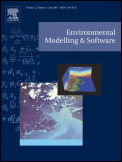Harmonization and translation of crop modeling data to ensure interoperability
Abstract
The Agricultural Model Intercomparison and Improvement Project (AgMIP) seeks to improve the capability of ecophysiological and economic models to describe the potential impacts of climate change on agricultural systems. AgMIP protocols emphasize the use of multiple models; consequently, data harmonization is essential. This interoperability was achieved by establishing a data exchange mechanism with variables defined in accordance with international standards; implementing a flexibly structured data schema to store experimental data; and designing a method to fill gaps in model- required input data. Researchers and modelers are able to use these tools to run an ensemble of models on a single, harmonized dataset. This allows them to compare models directly, leading ultimately to model improvements. An important outcome is the development of a platform that facilitates researcher collaboration from many organizations, across many countries. This would have been very difficult to achieve without the AgMIP data interoperability standards described in this paper.
Download full text in pdf format
 Published as:
Published as:
C. H. Porter,
C. Villalobos,
D. Holzworth,
R. Nelson,
J. W. White,
I. N. Athanasiadis,
S. Janssen,
D. Ripoche,
J. Cufi,
D. Raes,
M. Zhang,
R. Knapen,
R. Sahajpal,
K. J. Boote,
J. W. Jones,
Harmonization and translation of crop modeling data to ensure interoperability,
Environmental Modelling and Software, 62:495–508,
2014, doi:10.1016/j.envsoft.2014.09.004.
You might also enjoy (View all publications)
- CY-Bench: A comprehensive benchmark dataset for sub-national crop yield forecasting
- Hybrid phenology modeling for predicting temperature effects on tree dormancy
- To measure or not: A cost-sensitive, selective measuring environment for agricultural management decisions with reinforcement learning
